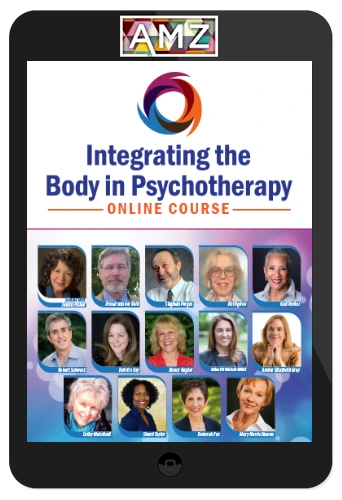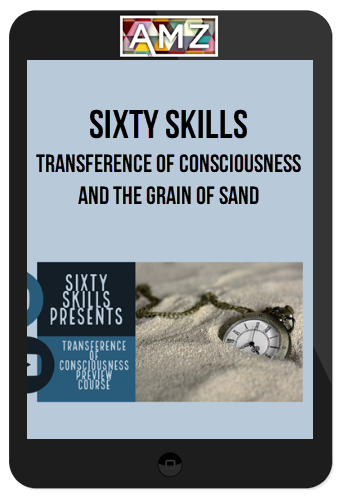Janina Fisher – Integrating the Body in Psychotherapy Online Summit
$99.00 $50.00
»Instant Delivery
Janina Fisher – Integrating the Body in Psychotherapy Online Summit
What you’ll learn in Integrating the Body in Psychotherapy Online Summit
Coming to Your Senses: Recovering from Trauma by Learning to Safely Inhabit Your Body
Bessel van der Kolk, MD, NY Times bestselling author of “The Body Keeps the Score”
Dr. Bessel van der Kolk will show you how to connect neuroscience, trauma research and clinical practice in your therapeutic work.
- The imprint of trauma on the brain, body and nervous system
- The keys to overcoming trauma
- Body-based practices to help clients re-establish ownership of their bodies and minds
The Emergence of a Polyvagal-Informed Therapy: Harnessing Neuroception of Safety in Clinical Treatment
Stephen Porges, PhD, author of the Polyvagal Theory
Scientific evidence reveals how to help your clients feel safe enough to get to the REAL issues — so they can finally heal from trauma, depression, addiction and other mental health challenges.
- How trauma and stress rewire and disrupt your clients’ nervous system
- Tools to promote feelings of safety
- Why deficits in the Social Engagement System are core features of psychiatric disorders
- Harnessing the power of neuroception in therapy
Sensorimotor Psychotherapy: Body Oriented Therapy Techniques for Trauma and Attachment
Pat Ogden, PhD, pioneer in somatic psychology, founder and Education Director of the Sensorimotor Psychotherapy Institute
The body’s intelligence is largely an untapped resource in psychotherapy. Yet the story told by the “somatic narrative”—gesture, posture, prosody, facial expressions, eye gaze, and movement—is arguably more significant than the story told by the words.
- Why movement and posture are important targets of intervention
- How to use mindfulness to tap the wisdom of the body (embedded relational mindfulness)
- Using movement to process traumatic memory and support adaptive relationships
A Mind-Body Approach to Race-Based Traumatic Stress Recovery
Gail Parker, PhD, author of ”Restorative Yoga for Ethnic and Race-Based Stress and Trauma”
The emotional wounds of race-based trauma land in the body. The resulting pain is not a cognitive experience and recovery cannot occur by talk therapy alone — in fact, talking about it can be re-traumatizing.
- How Race-Based Traumatic Stress and PTSD are different
- The physiology of emotion
- Using Restorative Yoga to support embodied awareness and enhance well-being
The Body as a Shared Whole: Using Visualization Techniques to Treat Dissociation
Janina Fisher, PhD, world-renowned licensed clinical psychologist, author and instructor at the Trauma Center, founded by Bessel van der Kolk, MD
Despite the feeling of being irretrievably damaged, all humans have a brain capable of visualizing or imagining experiences of acceptance, closeness, and comfort that evoke the same somatic sensations associated with early secure attachment.
- Why dissociation becomes a survival strategy
- Integrating visualization tools to develop a felt sense attunement
- Using somatic experience to foster internal attachment to clients’ most deeply disowned younger selves
- Strategies to increase self-compassion for dissociated parts
Energy Psychology: A Bodymind Approach for Rapidly Transforming Stress and Trauma
Robert Schwarz, PsyD, DCEP, executive director of the Association for Comprehensive Energy Psychology
Learn how you can use Emotional Freedom Techniques and other Energy Psychology (EP) approaches to rapidly down regulate the body — so your clients can better process and respond to stressful and traumatic events.
- Understanding the science and research of energy psychology
- How to use Energy Psychology tools within a trauma informed framework
- The simple EP protocol you need to support healthy boundaries
- How the 4 steps of the Emotional Freedom Technique process trauma
Becoming Safely Embodied: Building a Solid, Steady Secure Self
Deirdre Fay, LICSW, teaches “a radically positive approach to healing trauma”
This presentation presents the Becoming Safely Embodied model and its integration of ancient traditions from the yoga and mindfulness world into attachment theory and psychotherapy.
- The step-by-step guide to building inner structure
- Using somatic interventions to transform fears, blocks, and resistance into motivation
- Using your client’s body language to understand triggers
- Tools and strategies to help clients tolerate the emotional intensity that healing requires.
From Disorganization to Organization: Working with Somatic Experiencing®
Nancy Napier, LMFT, is a faculty member of the Somatic Experiencing Trauma Institute
Somatic Experiencing® offers approaches that allow us to help clients move from the disorganization of unmetabolized trauma responses to the organization of a coherent, regulated system.
- The importance of embodied presence for reinforcing client wholeness
- Cultivating a sense of benevolence in response to trauma’s impact on the body and psyche
- Exploring the elements of Somatic Experiencing
Collective Trauma: Practical Strategies for Working Somatically in Times of Change
Manuela Mischke Reeds, LMFT, developer of “From Trauma to Dharma,” a somatic trauma training for professionals
We live in a time of collective trauma. It is a shared experience that impacts the psychological and somatic health for both clients and therapist. This presentation will provide clinical tips on how to utilize somatic interventions for both client and therapist.
- The 3 essential somatic tools all clinicians need
- Why you need to compose a personal trauma narrative within the collective trauma context to relate to clients
- Key somatic techniques to reconnect with one’s innate somatic knowledge
Trauma and The Moving Body
Amber Elizabeth Gray, PhD, originated a resiliency-based framework and clinical approach — Restorative Movement Psychotherapy and Polyvagal-informed Dance/Movement Therapy
The most essential ingredient for client co-regulation is therapist self-regulation. That’s why this presentation will share embodied breath, somatic and movement practices that offer stabilization, grounding, and state-shifting for both client and therapist well-being.
- Using Restorative Movement Psychotherapy and Polyvagal-informed Dance/Movement Therapy in clinical practice
- Practices for regulation and reciprocity
- Grounding and stabilizing practice
- Enhancing interoception practice
More courses from the same author: Janina Fisher





